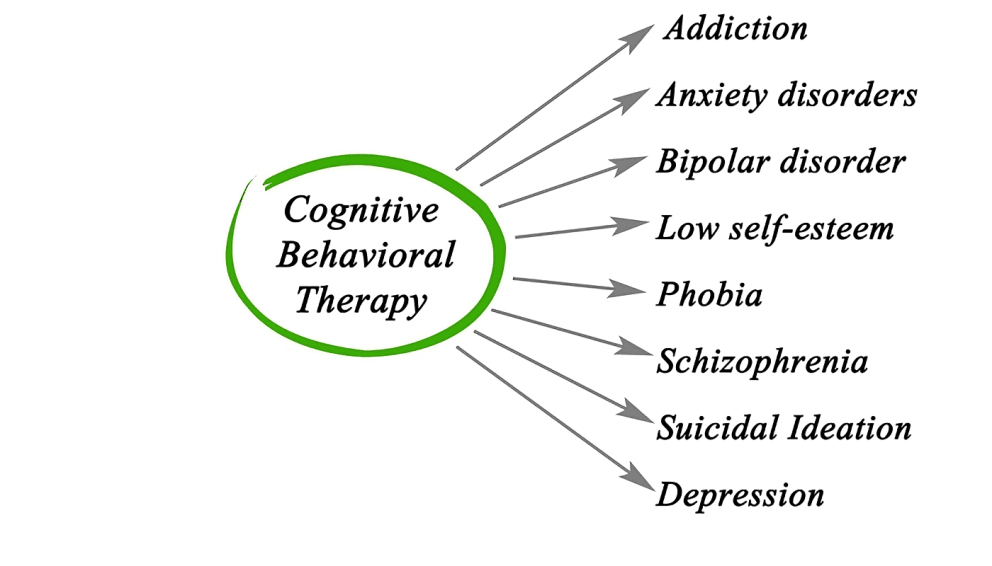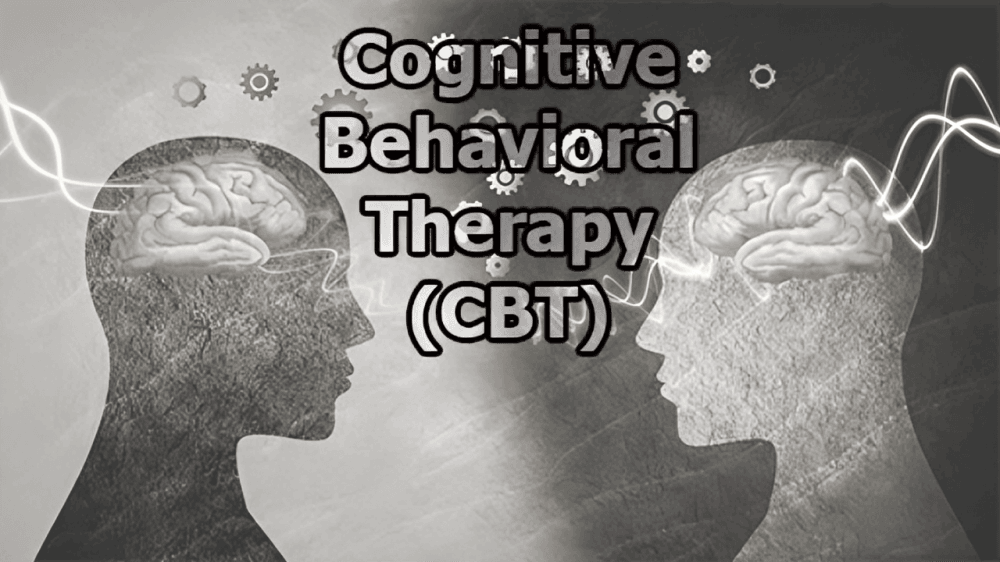
“
Cognitive Behavioral Therapy (CBT) is a proven psychological treatment that helps individuals manage anxiety and depression by changing negative thought patterns and behaviors. This evidence-based therapy empowers individuals to understand their triggers, develop coping strategies, and improve mental well-being. Whether used alone or alongside medication, Cognitive Behavioral Therapy (CBT) remains one of the most effective tools for lasting emotional resilience.1
1
”
Cognitive Behavioral Therapy (CBT) is a structured, evidence-based psychotherapy focusing on identifying and modifying negative thought patterns to improve emotional regulation and develop personal coping strategies. 1
Developed by psychiatrist Aaron T. Beck in the 1960s, CBT integrates cognitive and behavioral techniques to treat various psychological disorders, emphasizing the interconnection between thoughts, emotions, and behaviors. 2

CBT is effective in treating a range of conditions, including depression, anxiety disorders, phobias, PTSD, and obsessive-compulsive disorder, by addressing maladaptive thinking and behavioral patterns.
A core component of CBT is cognitive restructuring, which involves identifying distorted thoughts, challenging their validity, and replacing them with more balanced and constructive thoughts.3
Psychologist Dr. Albert Ellis, a pioneer in cognitive therapy, developed Rational Emotive Behavior Therapy (REBT), which shares principles with CBT. His work emphasized the role of irrational beliefs in mental health. 4
CBT is a short-term, goal-oriented therapy lasting 5 to 20 sessions. It focuses on addressing specific issues and providing clients with lasting coping strategies in a brief period.5
Homework assignments, like thought records and behavioral experiments, are essential in CBT. They help clients practice new skills and reinforce insights, promoting self-awareness and continued progress outside therapy.6
Unlike other therapies that explore the past, CBT is present-focused. It addresses current problems by modifying unhelpful thoughts and behaviors, leading to immediate change and progress. 7
Exposure therapy, a technique within CBT, involves gradual exposure to feared situations or stimuli in a controlled manner, allowing individuals to reduce their anxiety response over time.8

CBT is highly effective in treating insomnia. By addressing negative beliefs about sleep and implementing behavioral changes, individuals can develop healthier sleep habits and improve both the quality and duration of their rest.
CBT can be delivered in various formats, including individual therapy, group sessions, or even via digital platforms. The adaptability of CBT allows it to be effective in different settings, increasing its accessibility and convenience for diverse populations.9
Research has shown that CBT can be as effective as medication in treating certain conditions, such as depression and anxiety. It often has lower relapse rates and fewer side effects, making it an attractive treatment option for many individuals. 10
In managing chronic pain, CBT helps patients modify unhelpful thoughts about their pain and encourages the use of adaptive coping strategies. This leads to better emotional well-being and an improved quality of life for those with chronic conditions. 11
One of the cornerstones of CBT is setting specific, measurable goals. These goals give clients a clear direction, enhance motivation, and make it easier to track progress, ensuring that therapy remains focused and purposeful.12
Mindfulness-Based Cognitive Behavioral Therapy (MBCT) combines traditional CBT techniques with mindfulness practices. This fusion is particularly effective in treating depression and anxiety by promoting present-moment awareness.13

CBT is a versatile therapy that can be adapted for people of all ages. Whether in children, adolescents, adults, or older adults, CBT can be tailored to meet the unique psychological needs of individuals at different life stages.
Philosophical influences also shaped CBT. Ancient Stoic philosophers like Epictetus and Marcus Aurelius stressed managing thoughts and reactions to external events, laying the foundation for CBT’s focus on cognitive control. 14
In substance use disorder treatment, CBT helps individuals recognize the thought patterns and triggers that lead to addictive behaviors. It aids in building healthier coping mechanisms and supports long-term recovery by breaking the cycle of addiction.15
One of the primary benefits of CBT is that it equips clients with practical, lifelong tools to manage future challenges. The skills learned through CBT foster resilience and provide individuals with the ability to cope with life’s stressors effectively.16
As research into mental health treatment evolves, CBT continues to adapt. Innovations such as digital CBT, as well as integration with new therapeutic techniques, ensure that CBT remains at the forefront of evidence-based psychological care.17


